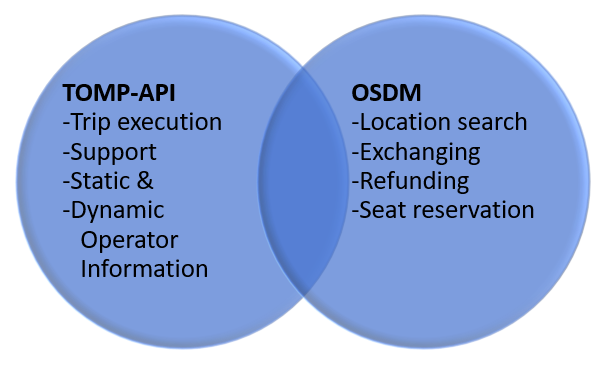We are frequently asked about the relationship between the TOMP-API and the other existing standards. Since navigating the mobility standards forest can be tricky we have created the “TOMP-API & ….” series where we will try to describe the differences, the similarities, and the visions of several standards and possible ways to align.
In this post, we will clarify how the TOMP-API and OSDM are related.
At first glance, they might look quite similar. Let us introduce the OSDM standard quickly.
OSDM is the new standard for train operations (https://unioninternationalcheminsdefer.github.io/OSDM/). It covers the following domains:
– searching for locations (=stations)
– searching for offers
– booking
Searching for offers and supplying them is quite extensive and of course mostly train-oriented. Exchanging products, refunding, and seat reservation is included in OSDM. It also allows the distribution of tickets.

TOMP-API on the other hand is more generic, also serving planning ( ~= search for locations & search for offers) and booking, but also allowing operations for trip execution (including providing tickets), support, and giving overviews of payments. In OSDM we see options in the request for offers we don’t have in the TOMP-API yet (like the preference of mode, operators or class).
We are considering if this information should be added to the TOMP-API. On the other hand, this kind of filtering can also be done on the MP side.
OSDM and the TOMP-API are currently trying to express their concepts, to formalize alignment. In our opinion, both standards can co-exist, although most of the operations for train operators can be handled using the TOMP-API, for specific train aspects the OSDM standard will be needed.
